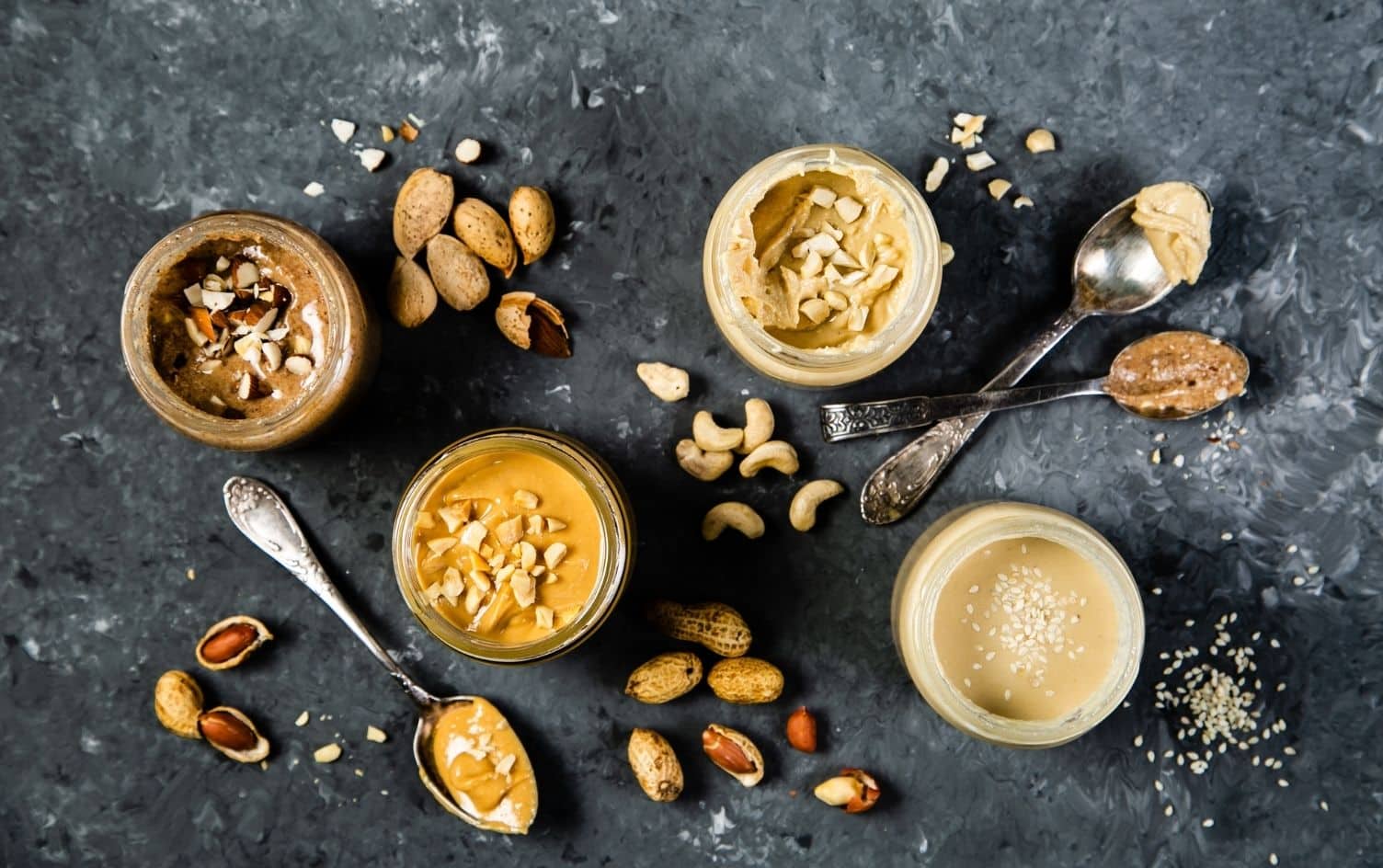There was once a time when the term “nut butter” was not in the lexicon, because there was pretty much just peanut butter. What a world that was! Now, with the increasing prevalence of peanut and tree nut allergies, combined with the now waning popularity of the Paleo diet, in which legumes like peanuts were forbidden, there are countless alternatives to peanut butter. Choosing the “right” nut butter can be overwhelming. Also, is there a “right” one? Nutrition can differ a bit amongst this group, so let’s delve into the details.
A NOTE ON FAT
When speaking to clients about nut butter (of which I am, of course, a big fan!), they often express fear because nut butters are higher in fat and calories. This is diet culture talking! The fat found in nut and seed butters is largely monounsaturated fat, which can help promote heart health, is anti-inflammatory, regulates blood sugar, promotes absorption of fat-soluble vitamins, and helps you feel full after meals. Feeling satiated after meals aids appetite regulation and decreases the likelihood of hunger pangs and snack cravings soon after eating an unsatisfying meal without enough fat.
Of course, something higher in fat is also going to be higher in calories (1 gram of fat has 9 calories, compared to carbs and protein, which have 4 calories each per gram). But, I am a strong advocate for not counting calories in the first place, and thinking more about satisfaction after meals and the nutrient density of foods. So, take the calorie counts here with a grain of salt.
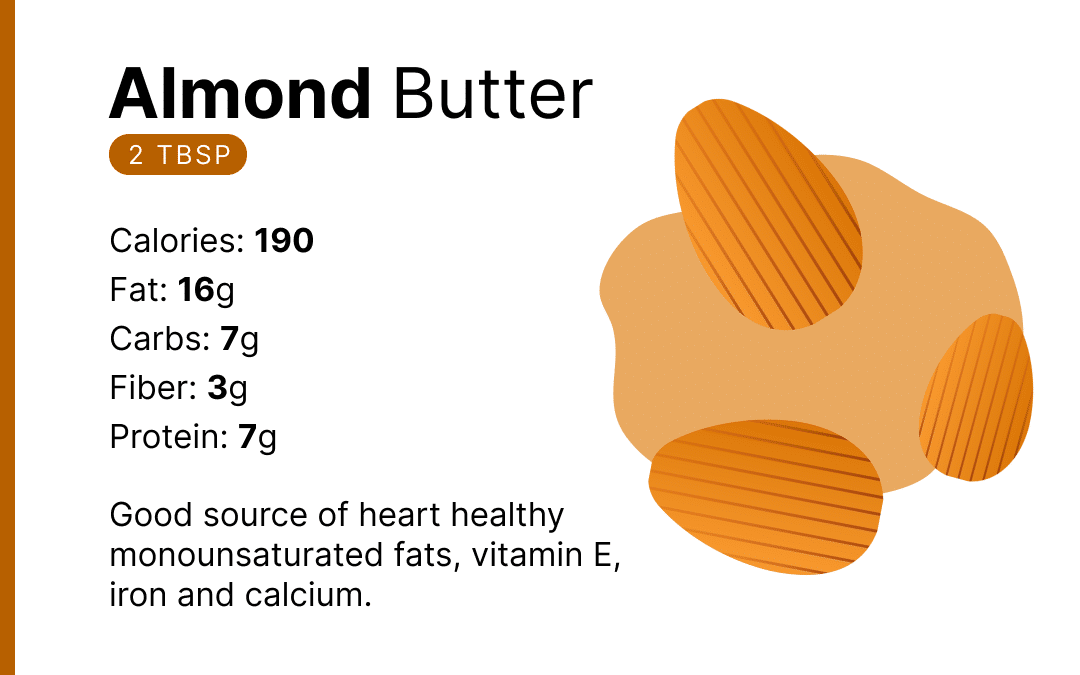
Almond butter is made from ground almonds and salt and has a milder flavor than peanut butter. Since it’s a tree nut, it is a great alternative for someone who is allergic to peanuts. Almond butter is also a nutritional powerhouse and an excellent source of heart-healthy monounsaturated fats. In fact, it contains 4 more grams of monounsaturated fat per 2 tablespoons compared to peanut butter, as well as more vitamin E, iron and calcium. I love almond butter mixed into oatmeal or spread on whole-grain toast.
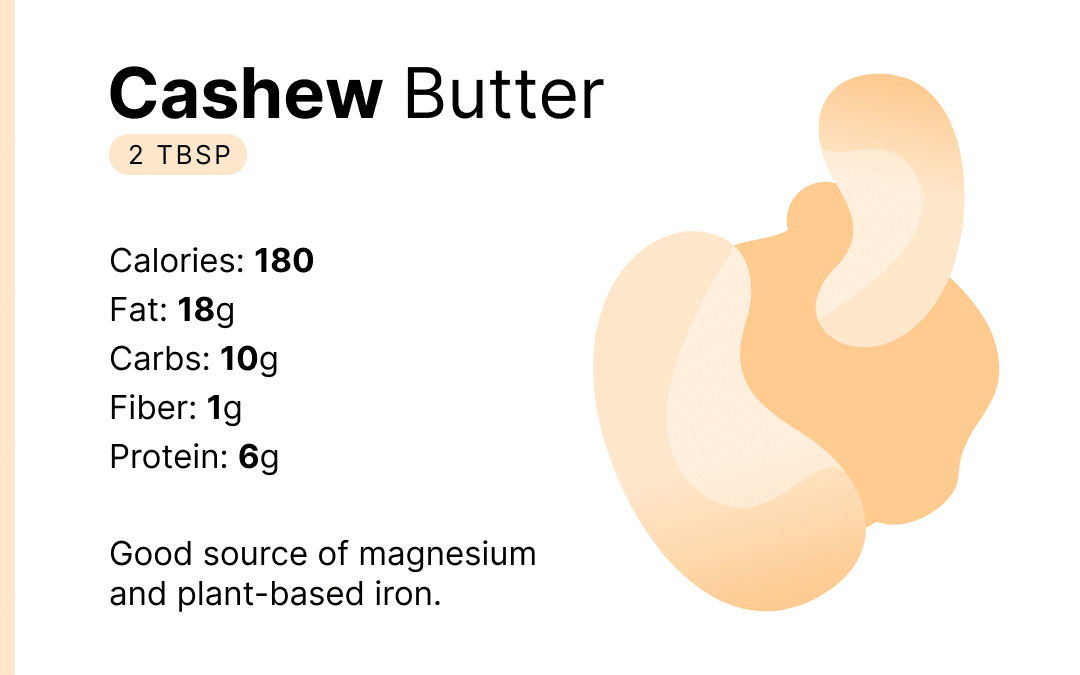
Cashew butter is rich and creamy, and versatile enough to use in baking sweet treats or cooking savory dishes like stir-fries or noodles. It is high in monounsaturated fats, with about 13 grams per 2 tablespoon serving, and is slightly higher in carbohydrates than other nut butters with 10 grams per serving. Cashew butter is also a good source of magnesium and is a plant-based source of iron. Cashew butter is usually more expensive than other nut butters. I like to use it as a sauce for grain bowls or Asian-inspired dishes.
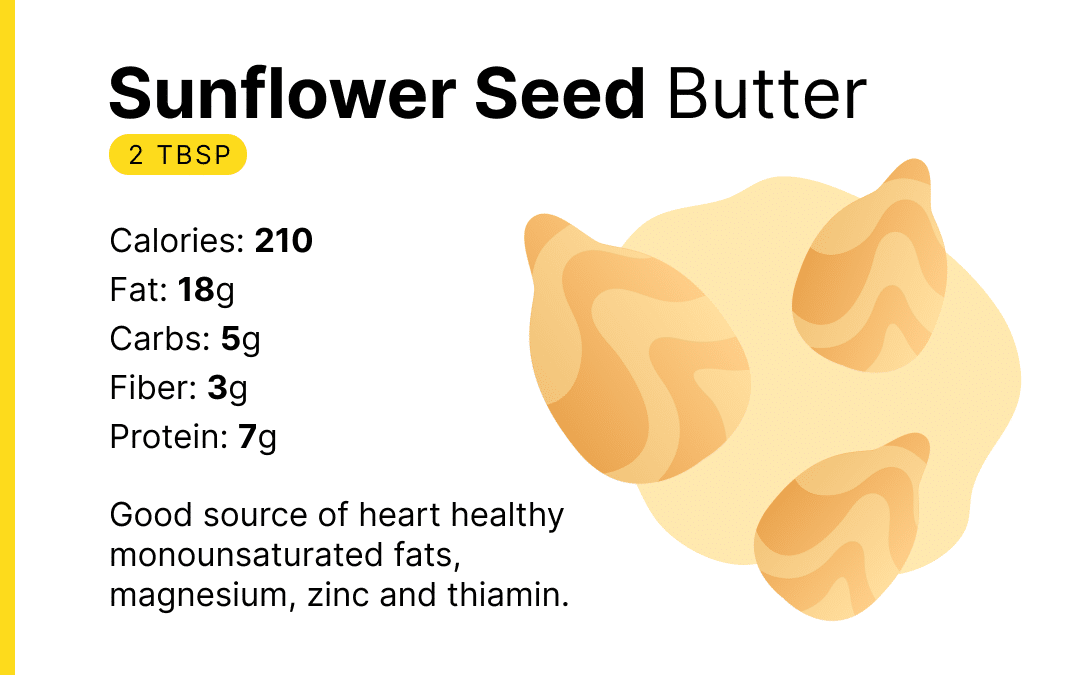
Sunflower seed butter is a great option for those allergic to peanuts and tree nuts. Made from ground sunflower seeds and salt, sunflower seed butter has a nutty, earthy flavor. It’s a great source of monounsaturated fats, and an excellent source of vitamin E. Sunflower seed butter is also high in magnesium, zinc and thiamin. It is delicious when used in combination with jelly for a sandwich (Think: PB &J!), or spread on a banana as a snack.
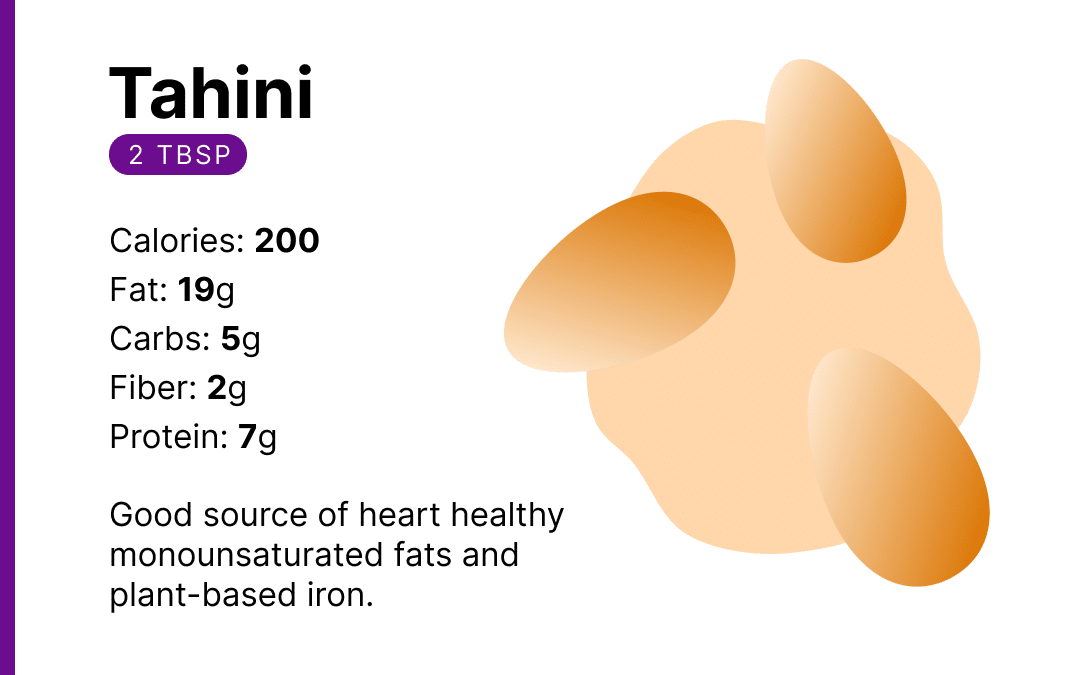
Tahini is made from ground sesame seeds, and it’s one of my favorite alternatives to nut butter. It’s mild and nutty, and works well in savory or sweet dishes. The most popular use of tahini is in hummus, but it can also be found in salad dressings, sauces and condiments for Mediterranean dishes. Nutrition-wise, tahini is high in monounsaturated fats with 16 grams per 2 tablespoons, 7 grams of protein, and it is a good source of plant-based iron. I love making a simple tahini sauce with lemon juice and water, and drizzling tahini on roasted or steamed veggies.
THE BOTTOM LINE
When it comes to alternative nut and seed butters, you can’t really go wrong in regard to high-quality nutrition, and in my opinion, taste! They are all delicious. The examples above are all fairly similar nutritionally, with small differences in some vitamins, minerals and macronutrients. Nut and seed butters make a satiating and blood-sugar stabilizing addition to fruits, crackers, breakfast foods like oatmeal or toast, or can be an ingredient in sauces and dressings for savory dishes. They all can and should absolutely be a part of a varied, plant-forward diet.
Ready to take the next step? Unlock MyFitnessPal Premium to access custom goal settings, quick-log recipes, and guided plans from a registered dietitian. Premium users are 65% more likely to reach their weight loss goals!
